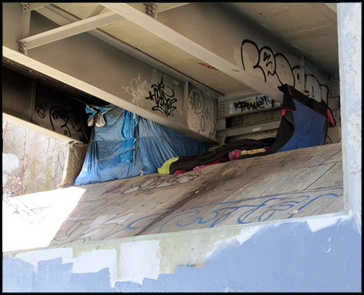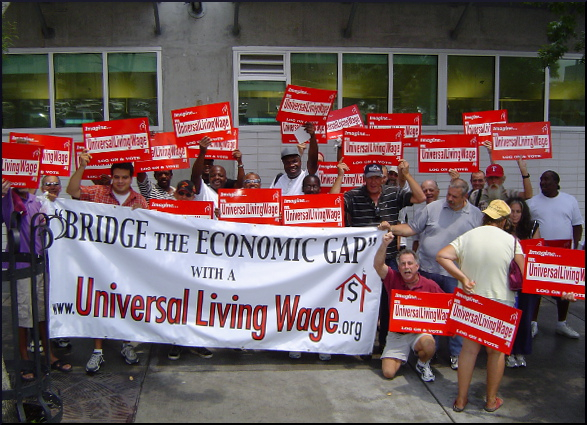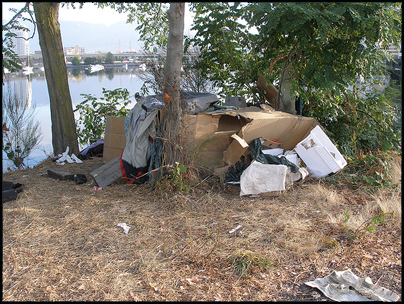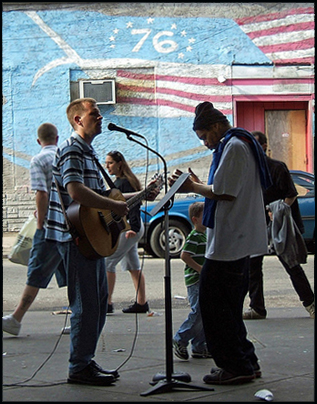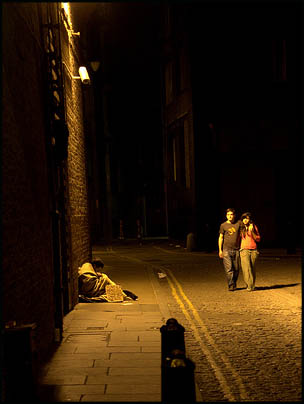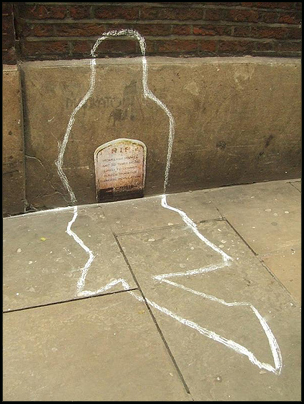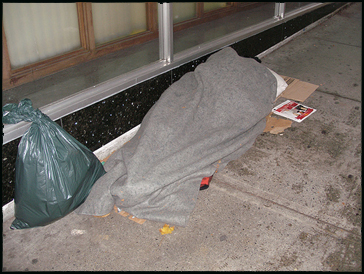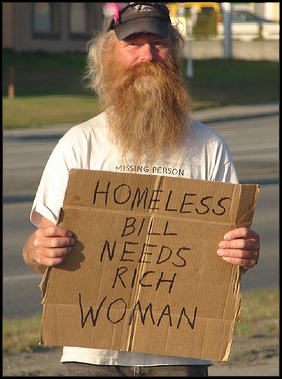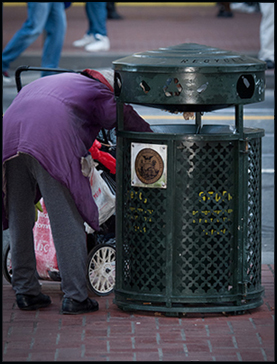
It comes as no surprise that churches are on board with the Hunger and Homelessness Awareness Week. The principle of sharing material goods with the destitute is a prime directive in every major religion, and if it isn’t, it ought to be. The dates are not exactly the same in each municipality, but the observance of such a Week is an idea whose time has come, and all across America, churches are supporting it.
Did you know there is a Muncy in Pennsylvania? Last Friday, the youth groups of several United Methodist churches banded together to host a “Box City” in the parking lot of Clarkstown UMC, so they could learn first-hand how to have empathy with people experiencing homelessness. Of course, the realism of such events is limited. The kids didn’t even have to go out and scrounge their own refrigerator cartons, which were donated by a local business. But the spirit is definitely in the right place.
Chris Warner, one of the youth leaders, supplied the reporter with details. The participants were…
[…] restricted from having any electronic devices and even food, unless friends and family feed them. A garbage can was filled with sandwiches and snacks organized to look like real garbage… Parishioners provided food and to add realism, half empty bottles of water and wrapped morsels of food where hidden among trash in a dumpster.
The kids didn’t have the experience of real panhandling, but throughout the night they collected cash donations for shelters and food banks. They also received “several truckloads” of food, blankets, and coats, to pass on to local distribution points. The youth were allowed to go into the building for warm-up periods, but apparently, toughing it out was a point of pride. The article quotes one of the teens, Carina Dunlap:
When I told my friends I was sleeping in a box, they just looked at me and asked why? It wasn’t bad sleeping in a box; I was one of two from Clarkstown who didn’t take breaks inside the church.
Another youth, Kelly Reed, said,
It was insane trying to sleep in a cramped box in the freezing cold, and then realize the next morning that’s how some people live their life. We had trouble dealing with it for one night.
In the similar-sounding but differently-spelled Muncie, Indiana, the United Methodist youth held their third annual Lockout for the Homeless, with donations going to the Indianapolis Interfaith Hospitality Network. The Christian Center teamed up with an organization called Alternatives Inc. for an event known as “Reality Check: Confronting Homelessness.”
Same state, different city: In Fort Wayne, Indiana, churches sponsored a Knit-In event where free yarn and knitting lessons were provided, and participants knitted hats and scarves for people experiencing homelessness. In Fort Meyers, Florida, at least 24 faith-based and other organizations have collaborated on a Homeless Service Day and Stand Down at Broadway Community Church. And, of course, there were many more variations on the homeless-simulation experiment.
Kids probably have a lot of fun at these things. How could a bunch of kids get together for a sleepover, and have anything but fun? They probably make some tasteless remarks, and even say jokingly that this homeless gig might not be too bad after all. And what does it mean, really, to perform a sanitized ritual of eating from a garbage can? There are probably people who think that the whole idea is utter nonsense.
But it isn’t. You never know what kind of experience will plant a spark of inspiration in a young person’s mind. Some of these kids will have a different perception next time they see a person eating from a real garbage can. Some of these kids think about it later, alone, at night. They make connections and consider alternatives.
It would be great to hear from some young people who have actually participated in events of this kind. Have you done a homeless sleepout? Did it do anything to your head? If so, what?
Source: “Youth prepare for National Homeless Awareness Week by sleeping in boxes,” The Luminary, 11/09/10
Source: “On Your Side Community Calendar,” The IndyChannel.com, 11/10
Image by Franco Folini, used under its Creative Commons license.

